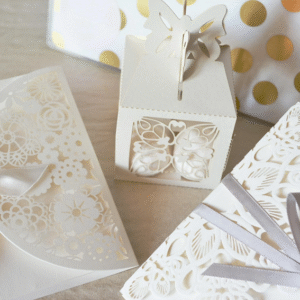Sewing machines are helpful appliances that liberate the imaginative by providing a means to actualize their visions. The quality of your creations will increase dramatically once you master using a sewing machine, whether you’re just starting out or already a seasoned pro.
Improving your sewing skills can be accomplished in a variety of ways, including familiarizing yourself with the fundamentals of your sewing machine, choosing a sewing machine and appropriate needle, adjusting the tension and trying out various stitches.
Step by Step Guide to Use a Sewing Machine
This tutorial will teach you the fundamentals of using a sewing machine and provide you with helpful hints.
Familiarize yourself with the sewing machine parts
Learn how your sewing machine really works. Before beginning a project, you should familiarize yourself with your sewing machine. Learn how to use the needle, presser foot, thread tension dial, stitch selection dial, and bobbin case before you start sewing. For in-depth instructions and visual aids, please consult the manual that came with your device. By reading this, you’ll be better equipped to maintain the equipment and extend its life.
Set up the sewing machine on a sturdy surface
Stitching will go more smoothly if you put your machine on a flat, stable surface. If you don’t want your PC to jiggle around while you’re using it, make sure you’re working on something steady. Put everything you need out on a large table or desk. Make sure the fabric can be moved freely around the machine without getting snagged. Stitching with higher precision and less irritation is possible when the atmosphere is calm.
Make sure the top thread is correctly threaded
Correctly threading the upper thread is the most crucial step in stitching. If you need help threading your sewing machine, check the manual. After threading the needle, you’ll usually pass the thread through tension discs and guides. Keep the presser foot high to prevent thread from becoming caught. Before moving forward, check for tangles and ensure the thread is straight. If you take your time and inspect each stitch carefully, the finished product will be flawless.
The bobbin needs to be wound and loaded
Using the bottom thread requires careful winding and filling of the bobbin. Wind the thread end onto a bobbin that has been threaded with the end of the thread. Depending on the model, the bobbin can be wound using either a hand wheel or a foot pedal. When the bobbin is full, remove it and trim the excess. Make sure the bobbin thread matches the top thread in both type and weight.
Tuck the bobbin into its protective housing
The winding process is complete when the bobbin is inserted into the machine’s bobbin housing. A bobbin can be loaded into a sewing machine from the top, the front, or the side. If the bobbin spins freely after being pulled, the thread is unwound effortlessly. A bobbin that isn’t inserted into the machine properly will result in stitches that aren’t even.
Pressure can be adjusted to suit individual preferences
The amount of force applied to the upper thread as it travels through the machine can be adjusted by adjusting the tension. When the top and bottom threads of a material are woven together, it results in uniform and symmetrical stitches. Check the machine’s default tension by sewing a sample design on a scrap of fabric. Adjust the tension slider in very small increments to fix stitches that are either loose or too tight. Keep in mind that you might need to adjust the tension based on the cloth you’re using.
Choose the right needle for your fabric
Using the appropriate needle for your fabric is crucial if you want your stitching to look neat and professional. Needles come in a wide range of sizes and styles, each optimized for a certain cloth or stitching task. Ballpoint needles are ideal for knits, while universal needles are suitable for medium-weight materials. Instead of the sharp needles used for knits, there are needles designed specifically for denim and canvas. The instructions that came with your sewing machine or the package of needles you purchased will be of great assistance in determining which needle is best for your project.
A presser foot must be applied
A presser foot is used to keep the fabric in place and provide an even feed. Presser feet come in a plethora of sizes and forms, so you may find one that works for your project. When the presser foot is properly set in the presser foot holder, you will hear a click as you release the presser foot lever. For the cloth to fit under the presser foot, it needs to be neither too loose nor too tight.
Adjust the drapery and make it straight
Fabric needs to be positioned precisely for accurate sewing. Before putting the cloth under the presser foot, make sure the raw edge is lined up with the seam allowance or stitching guideline. Place the fabric behind the presser foot so it won’t move when you sew. Never pull or stretch the fabric, since this can distort the stitches and ruin the garment. Smooth down any creases or folds before beginning to sew.
Lower the needle into the fabric
The needle must be lowered into the cloth, either manually with the handwheel or automatically with the machine’s needle down function, before stitching can commence. This makes the first stitch more secure and prevents the fabric from moving or bunching. Inserting the needle into the fabric is the first step in beginning to sew.
It’s best to take it easy for the first few stitches
Taking things slowly and carefully at first will help you become adept with the fabric and the stitch. Your stitching pace will increase as you gain experience and confidence. You’re more likely to make a mistake or get uneven stitching if you rush. You can probably get the hang of the machine’s pace if you practice keeping a constant rhythm when stitching.
Take care not to rip or tear the material
Use your hands to keep the fabric from getting stuck in the needle or the machine while you sew. One hand in front of the needle and one behind it will help you guide the fabric in the desired direction while you sew. Too much pulling or pressing could loosen the fabric or break the stitches. Maintaining a steady feed will provide uniform stitches.
Practice using different stitches
Modern sewing machines have a wide variety of stitches, and the straight stitch is just one of them. Learn how to do zigzags, fancy knots, and stretch knots, and put them to use. If you want to know how to change the stitches on your sewing machine, look in the manual. Sample the finished products of various stitches and put your newfound skills to the test on scraps of material.
Learn to backstitch for secure seams
Backstitching is a reliable method for binding and closing seams. Backstitching begins with a series of forward stitches, then involves turning the work and stitching backwards over the initial set of stitches. A very little patch is the sum total of these stitches. There has to be one more row of stitches towards the seam’s conclusion. If you’re constructing something that will be cleaned and worn often, you really must use backstitching.
Utilize the seam guide to get flawlessly straight seams
As you stitch, the seam guide on your machine can assist you in maintaining consistent seam allowances. The term “seam allowance” is used to describe the area around the perimeter of a fabric piece that is set aside for seams. Simply adjust the spacing of the seam guides to the desired length. A designated needle plate is a feature of some machines, while others offer a large selection of optional attachments. To create neat and professional-looking seams, align the edge of the fabric with the appropriate guide or mark.
The stitch’s length and width to suit your purposes
Use the length and breadth sliders to modify the size of each stitch. Modify this to suit your needs in the workplace. A longer knot is preferred when basting or gathering, while shorter threads are more effective when securing seams. The width of the thread is essential for some sewing techniques and artistic effects, such as zigzag stitching. How to adjust the stitch length and width is detailed in your machine’s manual?
Experiment with various thread weights and qualities
The thread you use to sew can have a major effect on the final product’s quality and longevity. You should experiment with several thread sizes and types to find the one that best suits your needs. Although cotton thread’s versatility makes it a good choice, polyester thread is superior because of its durability and longevity. Use fancy threads like shiny or silk to make eye-catching ornaments. Both matching and contrasting thread colors can be used to make the stitches in your project stand out.
Take breaks and rest your eyes and hands
Taking breaks will provide your eyes and hands a much-needed rest. Sewing requires constant movement and focus, which can fatigue the eyes and hands. Sewing requires breaks to prevent injury and fatigue. Get up and stare into space or close your eyes for a minute to give your body and mind a break. If you’re feeling tense or stiff, try some of these stretches for your arms and hands. If you sew in an ergonomically correct way, you can improve your health and well-being.
Clean and maintain your sewing machine regularly
If you’re kind with your sewing machine, it could last longer and require fewer repairs. Regularly clean the machine with a brush or vacuum attachment to remove lint, dust, and loose threads. Use a damp, gentle cloth to clean the exterior. Reduce or reduce friction and boost equipment efficiency by lubricating moving parts as directed in the owner’s handbook. Get your car checked out by a pro if you notice any unusual noises or sensations.
Troubleshoot common sewing machine issues
These are the most typical fixes. When ordinary issues can be remedied quickly and easily, people are less likely to become frustrated. If your stitches are uneven or you keep getting knots, you may need to adjust the needle’s position, the tension on the bobbin, or both. If you’re having trouble making knots, try sharpening or replacing the needle. Try different needle sizes or increasing the tension on your sewing machine if your fabric is puckering. If your sewing machine is malfunctioning, check out specific troubleshooting advice in the manual or on the internet.
Get some additional bobbins and needles just in case
Having extra needles and bobbins on hand is always a good idea. Needles can break or dull with time, so it’s smart to have a backup supply on hand. The same way that it’s a huge time saver to have extra bobbins with thread already wound on them in case you run out of thread or need to switch colors in the middle of a project. Store them where you can quickly get to them to make quick swaps.
Make full use of the equipment’s features
Getting into sewing is now simpler and more enjoyable than ever thanks to the many features and attachments available for today’s sewing machines. There are a lot of cool features you should learn how to use on this system. Putting these tools to the test can spark new ideas for your company and simplify some of your daily processes. Read the user manual or look up instructions for the machine’s features and functions online to familiarize yourself with its operation.
Spend some time sketching both straight and curved lines
Professional sewing requires only straight, smooth stitches. Practicing with the fabric guided in a straight line will result in straighter stitches. When stitching, go slowly and gently. Manually twisting the material and regulating the machine’s speed allow for the creation of curves. Acquiring the kind of skill and dexterity necessary to sew seams that look professional takes time and effort.
Explore decorative stitches and embroidery options
You may make your creations more unique by using the decorative stitching and embroidery functions included on many modern sewing machines. Experiment with a variety of decorative stitches by practicing on pieces of fabric. These stitches can be used to embellish clothing, alter hemlines, or create decorative items for the home. If your sewing machine has an embroidery function, use it to give your creation a more refined look.
Take your time and enjoy being creative
Sewing is a kind of creative expression that lets you give your thoughts and feelings a physical form. Have fun while you learn at your own pace. Take your time and appreciate the results of your meticulous work. Regular sewing practice can help you develop your skills and discover new forms of creative expression.
Conclusion
The creative doors you’ll open once you master the sewing machine are wide. Professional-looking results can be achieved by learning how the machine functions, assembling it correctly, threading the upper thread, loading the bobbin, and adjusting the tension.
Practicing different stitches, locating the appropriate needle, and being accustomed to positioning and guiding the fabric are all easy ways to enhance your sewing abilities. You can quickly acquire a sense of competence and satisfaction in making beautiful garments and other handcrafted products if you are willing to put in the time, effort, and determination to learn. Put those needle and thread skills to good use.






